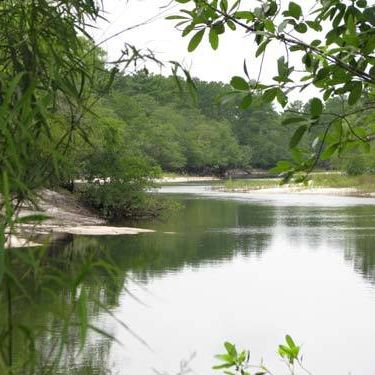
Fast Facts
-
Along the East Coast Greenway, 50 key rivers total over 7,000 miles.
-
All of the original 13 colonies are on the East Coast. Pennsylvania doesn’t directly touch the coast, but the Delaware River does.
-
Up until the emergence of railroads in the 1830s, rivers and other waterways were the most commonly used way to travel long distances in the U.S.
-
⅔ of drinking water in the United States comes from rivers and streams.
-
The East Coast is the most populated coastal area in the country.
-
$97 billion of river-related recreation and tourism is created annually in the U.S.
Top 10 longest rivers along the Greenway
- Susquehanna River
- Roanoke River
- Connecticut River
- James River
- Hudson River
- St. Johns River
- Potomac River & Tributary Anacostia
- Savannah River
- Delaware River & Tributary Schuylkill
- Ogeechee River
Top 10 largest watersheds on the Greenway
- Susquehanna River
- Santee
- Potomac
- Altamaha
- Hudson
- Savannah
- James
- Roanoke
- St. Johns
- Cape Fear
Watersheds of the East Coast Greenway
River Recreation
John MacGregor, a Scottish explorer, is considered the founder of recreational canoeing. Prior to the mid 1800s, canoes were chiefly used for transportation, trade, and war. Historically, canoes have been made from logs, animal skins and tree bark. Birch bark was commonly used in the U.S. and Canada because of it was lightweight, waterproof, smooth and abundant, making it ideal for travel on rivers and lakes.
Water Use
The average American has a water footprint of 32,911 gallons/day. This includes water used for the production of food, energy, clothing and other goods. It takes about 6,800 gallons of water to grow a day's food for a family of four. 80% of the fresh water used in the U.S. is for irrigating crops and generating thermoelectric-power.
River Pollution
The first Earth Day was held April 22, 1970 as a reaction to many environmental disasters, including a fire in the Cuyahoga River in Ohio. The federal Clean Water Act was passed in 1972. Forty years later, the percentage of water considered safe for fishing and swimming has doubled across the country. One major threat to rivers is stormwater pollution. Rain often washes litter, oil, and other pollutants from infrastructure, like roads, into the river basin. The East Coast Greenway, with its intent to be lined by green space as a linear park, can be part of the solution by both shifting car trips to bike rides and walks and by creating natural landscapes that filter pollutants and reduce erosion feeding into our corridor's streams, creeks, and rivers.
Glossary of River Words
Canoe
Originates from the Carib word “kenu” which means dugout and from the Arawakan word canaoua and Spanish word canoa.
Head
The beginning of a river.
Kayak
(Ki ak/qayaq) translates to “man-boat” in Inuktitut.
Mouth
The end of a river.
Muhheakantuck
“River that flows both ways”: what the Mohican tribe called what we now know as the Hudson River, before English and Dutch settlers arrived.
Potomac
One of the nation's largest rivers; European spelling for the Algonquin word Patawomeke, which means "place where people trade" or "great trading place." The word is also similar to the Greek word for river, potamus.
River otters
The North American river otter once lived in every state in the United States, but its populations have significantly reduced due to water pollution, habitat loss, and trapping for the fur trade. River otters can stay underwater for up to 8 minutes.
Wildlife fast facts
Freshwater animals are disappearing five times faster than land animals. Of the 1,200+ species listed as threatened or endangered, 50% depend on rivers and streams. At least 123 freshwater species became extinct during the 20th century. These include 79 invertebrates, 40 fishes, and 4 amphibians.
Manatees
Manatees are related to elephants, not dolphins or whales. The West Indian manatee lives in rivers and coastal waters from Florida to Brazil.
Photos and information compiled from our East Coast River Relay partner organizations and other riverkeeper and environmental organizations. We appreciate the important stewardship these organizations do.
Join the Greenway family
Receive East Coast Greenway news directly in your inbox.
Together, let's grow the Greenway
Recent record-setting funding for design and construction goes directly to building the East Coast Greenway - as it should. The East Coast Greenway Alliance needs your support to continue our advocacy work that is fueling completion of the Greenway. The Alliance has a sustained track record of turning every dollar donated to our nonprofit into $100 in public infrastructure investment. Invest today and support the growth of the East Coast Greenway from Maine to Florida.















